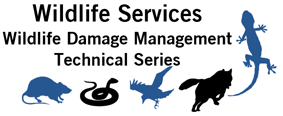United States Department of Agriculture: Animal and Plant Health Inspection Service

Wildlife Damage Management Technical Series
Date of this Version
5-2019
Document Type
Article
Citation
King, T. 2019. Pelicans. Wildlife Damage Management Technical Series. USDA, APHIS, WS National Wildlife Research Center. Fort Collins, Colorado. 14p.
Abstract
American white pelicans (Pelecanus erythrorhynchos, Figure 1) threaten aquaculture producers by direct predation and the spread of disease. They are also considered competition and a nuisance by some sports fishermen. Pelicans can also damage pond levees and crops, such as rice, by trampling the vegetation and depositing guano. A combination of wildlife damage management techniques is often necessary to reduce pelican damage to these resources. Aquaculture Prior to the winter of 1992, American white pelican depredations at catfish facilities in the Delta regions of Arkansas and Mississippi were limited, and birds were easily dispersed from the area. Since 1992, however, pelicans have become more persistent in their foraging efforts and more difficult to disperse. Their increased persistence requires an equally persistent response to limit their damage. Around-the-clock harassment patrols may be necessary especially where pelicans forage at night. The most effective technique involves harassing the birds at their loafing sites near catfish farms. This often causes them to abandon the site, thus reducing or eliminating predation at nearby facilities.
Included in
Behavior and Ethology Commons, Biodiversity Commons, Other Animal Sciences Commons, Other Ecology and Evolutionary Biology Commons, Population Biology Commons, Terrestrial and Aquatic Ecology Commons


Comments
US government work